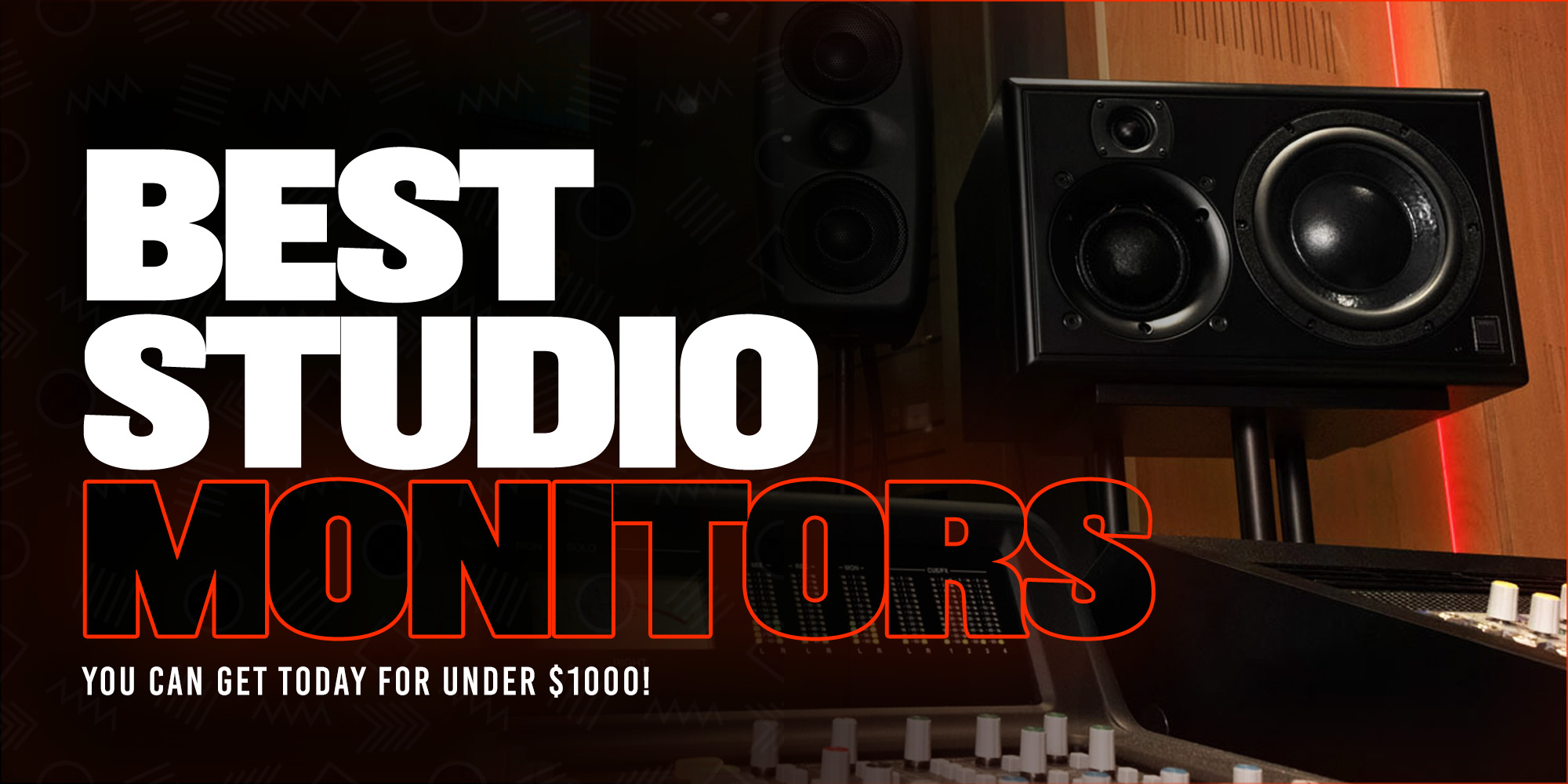
How to Find The Best Studio Monitor That Fits Your Budget
If you're in the market for some studio monitors for $1000 or less, the good news is that you've got some amazing options.
There are tons of great studio monitors that even top professionals use at this price point, so you'll have lots of options to pick from.
But when you're willing to spend this much on studio monitors, it's important to be well-educated on all the monitors, because this is a hefty chunk of change to spend on studio monitors!
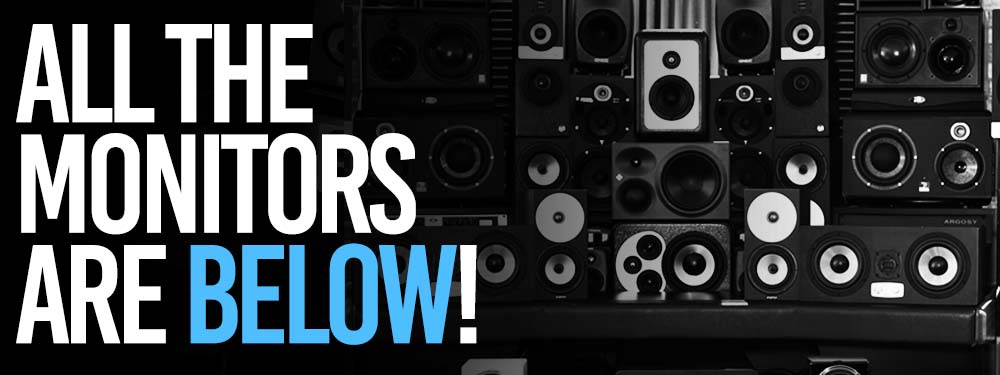
Alongside our comparison, I highly recommend actually going into your local music store to take a look and even test the studio monitors you're very interested in.
We've also added some video reviews of studio monitors below for you to take a look at, so you can get even more insight into what they have to offer you.
Bonus: check out our ultimate best studio monitor comparison, it goes into a lot more depth to better help you choose the right studio monitors.
But what are the best studio monitors for under $1000?
That's what we'll be looking at here because we tested all the most popular ones you would want to consider!
And we've made a list of the best ones you should consider taking a good look at.
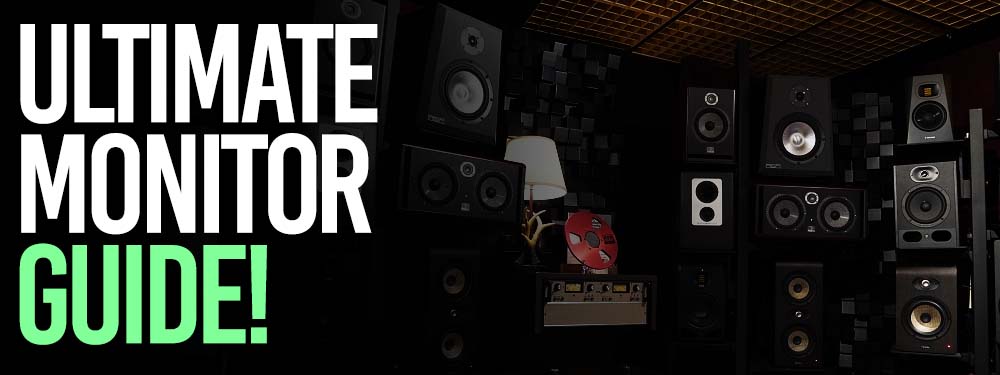
At the 1000$ mark, you'll find some of the best studio monitors in the business - and from more high-end companies that hand-make the studio monitors.
With this budget, you'll see some names on this list such as Dynaudio, Neumann, and Focal, which don't even offer cheaper options.
Of course, alongside this, you'll also find higher-end versions of the staple names - like the KRK Rokit series and the Yamaha HS series.
You might not even need a sub using a lot of the studio monitors on this list as many are big enough to cover at least a decent chunk of the lower-end frequencies.
When we made this list, we were looking at the following criteria:
- Value for money
- Features
- Build Quality and Reliability
- Sound clarity
- Customer reviews
We've ranked the best studio monitors based on these criteria to help you determine which will work best for your setup!
Want to get your music on active & relevant playlists that actually get results?
Get your music heard now 👇
10 Best Studio Monitors under $1,000: The Ultimate Guide
Time to get you a good set of studio monitors that put you alongside the best!
Some of these will be under $1000 as a pair, while others will be under $1000 for a single studio monitor.
These are the top 10 studio monitors under $1,000 at a glance:
Note that pricing for these changes all the time and depends on the region you're in - so be sure to look around and research them all.
You might find some deals that make one of these studio monitors more appealing than any of the other ones.
It's best you also take into account the acoustics of your room and the size of these monitors, as some can get really big at this price point.
Let's dive deeper into each one, so you can decide which is the best fit for you.
#10. ADAM Audio A7X (Single)
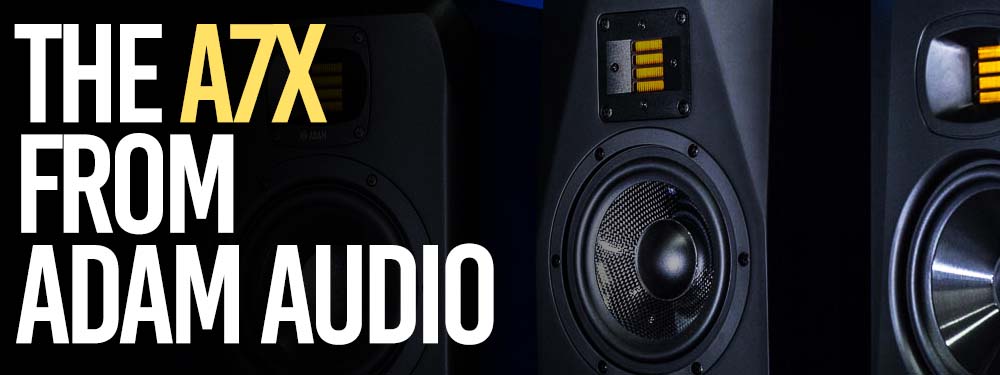
Some say that the ADAM Audio A7X is the absolute pinnacle of what the best studio monitors could sound like.
This is undoubtedly a professional monitor - and one that you'll see in professional studios across the world.
The first aspect that distinguishes the old from the new model is the X-ART tweeter.
The X stands for eXtended frequency response and thus for one of the features of the Accelerating Ribbon Technology that has been drastically improved: the frequency response.
It now extends up to 50kHz.
In addition, the X-ART tweeter has higher efficiency and higher maximum sound pressure levels.
The tweeter type we find here is Hybrid Ribbon Design found on higher-end Adam Audio models which continue to add complexity and finesse into what could have been more traditional speakers for average users or professionals alike.
Check out this review of these studio monitors as well:
So you're getting a 7-inch driver on these ones which are admittedly smaller than some others on this list that have even 10-inch drivers.
Although if you don't have a very big room there's no need to have such big drivers - and the quality on these smaller 7-inch ADAM A7X's are spectacular.
Check out the ADAM Audio A7X here.
#9. Kali Audio IN-8 (Single)
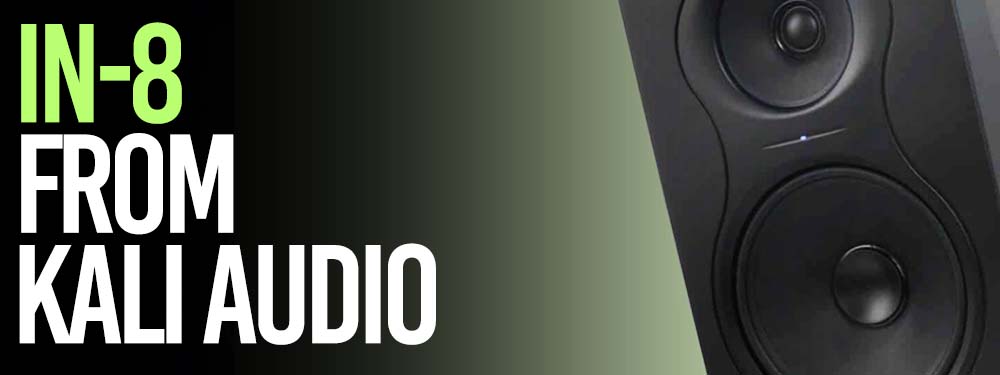
The Kali Audio IN-8's are a major step up from their more budget-friendly LP-8's.
They both feature 8-inch drivers, although the IN-8's are superior in some key ways that we'll dive into below.
These are aiming to go against the ADAM A7X's and other high-performance studio monitors for professionals.
It definitely has a leg up with its primary woofer being an inch bigger than the ADAM A7X's, so that's a factor to consider if your studio is big and you need more power to fill the room with sound.
The IN-8 studio monitors are a 3-way design with hyper-realistic imaging of a co-axial mid-range and tweeter, they offer more transparency, lower distortion, and a soundstage that is superior to the LP-8's. Here's how they stack up:
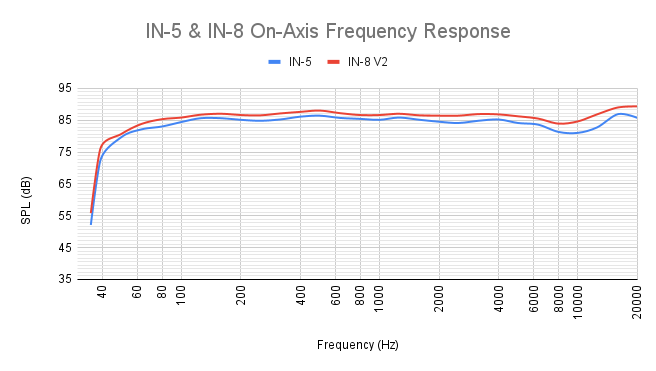
It also has built-in wall mounting ability if that's something you need for your studio.
The Kali Audio IN-8 is equipped with sound-shaping options, which help you accommodate the acoustic properties of your room.
But that’s not all: Kali Audio has also made the process of adjusting to your surroundings a lot more flexible by providing eight presets for most rooms and fine-tuning high and low frequencies as well.
And in terms of pricing, they come out on top compared to others - these are typically more affordable of the bunch.
Check out the Kali Audio IN-8 here.
Be sure to check out our list of the best studio monitors under $500 if you have a tighter budget or want smaller studio monitors, or the best studio monitors under $200 if you have an even tighter budget.
#8. Focal Alpha 65 (Pair)
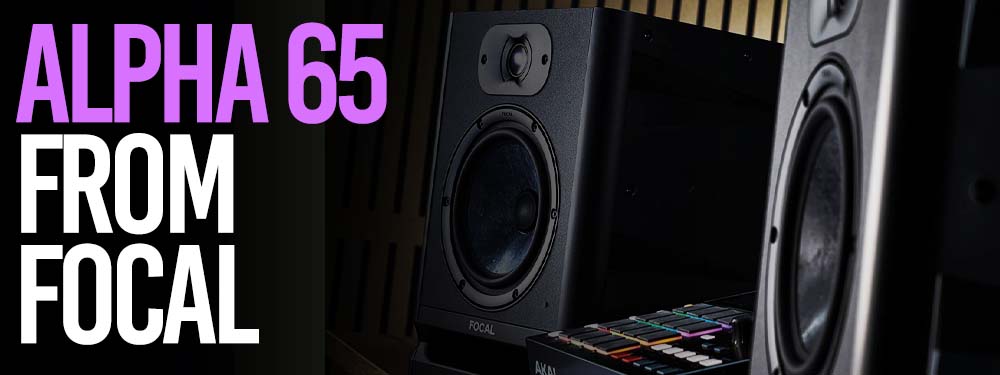
The Focal Alpha's are the go-to for many producers, especially in the electronic dance music scene.
It has a neutral sound that provides a great level of depth and clarity to let you better pinpoint all parts of your mixdown.
These are also a more modern iteration that came on the market recently, so you'll see some newer technologies in these monitors.
It is highly recommended for an electronic sound producer because it provides the same tone at low and high volumes.
The Alpha 65 monitor has a powerful 1” (25mm) aluminum tweeter and a 6.5” (16.5 cm) woofer with a Slatefiber cone developed and manufactured in Focal's workshops in France, for excellent dynamics and neutrality of sound at high volumes.
Its features include a 1/4" (6.35mm) TRS jack input in addition to the XLR and RCA analog inputs. There is also a disengageable automatic stand-by mode as well as inserts for wall and ceiling fastening.
The bass-reflex design, rounded edges, and modern, robust side panels are other big pluses for the Alpha 65, all contributing to acoustical integration and optimum aesthetics in any location.
The power consumption of these speakers is very minimal as well, making them environmentally friendly.
And while these aren't the biggest speakers in terms of driver size, they are definitely a step up to the big boys.
You're getting studio monitors from a more professional company with higher-end speakers. And the best part? You can get a pair of them for under $1,000.
Check out the Focal Alpha 65 Evo here.
#7. Neumann KH 120 A
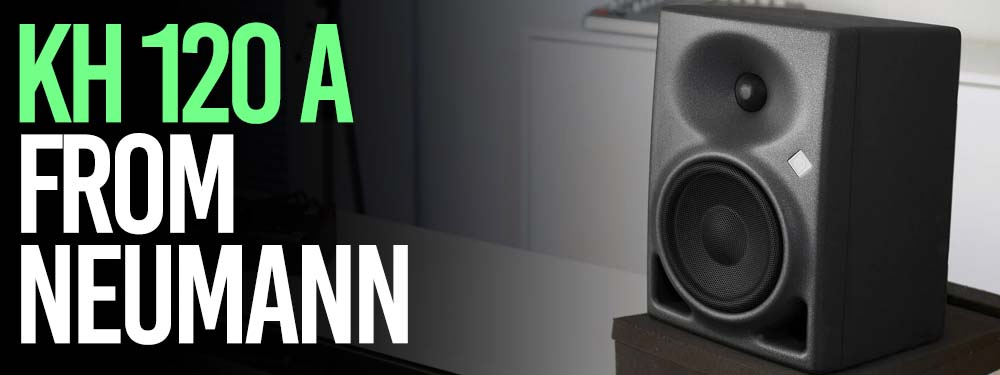
These are a big step up from your everyday budget bedroom studio monitors.
Neumann is one of the most credible companies on the block and is a staple in professional recording studios across the world.
And the drivers on this model are just 5.25 inches - smaller than the others on this list.
Though that means little - the name 'Neumann' means exceptional audio quality at all costs, and these studio monitors are among the best in the business.
You're getting a frequency response of 52Hz to 21kHz and a powerful titanium fabric dome tweeter that delivers low-distortion and high-frequency reproduction.
You're also getting Neumann's Elliptical Mathematically Modelled Dispersion (MMD) waveguide technology - which provides smooth off-axis response and accurate monitoring in non-ideal acoustical environments.
The composite sandwich cone woofer designs dampen breakup modes and reduce harmonic distortion.
This is a huge plus if you don't have the exceptional audio treatment done to your studio space.
Here's a review from a producer on Sweetwater's product page:
"Fantastic monitors, like others have said stereo image is beautiful. If your mix is trash they will tell you. Little to no fatigue after listening for hours.
The Bass is very good for a 5.25" woofer, at least in my 12'x 11' room.
I do have bass traps in every corner and along the front and rear ceiling lines. The front ports are great for setting them up close to a wall.
Built like tanks (cast aluminum), and also like the Neumann badge tells you when you're pushing them too hard. For a small home studio, I highly doubt there's anything in this price range that will beat these guys."
And yes, these look ancient - and are relatively old monitors. And the price for a single monitor is among the highest of any on this list.
But if you're in pursuit of the absolute best, you can never argue against Neumann.
Check out the Neumann KH 120 A here.
#6. JBL 308P mkII (Pair)
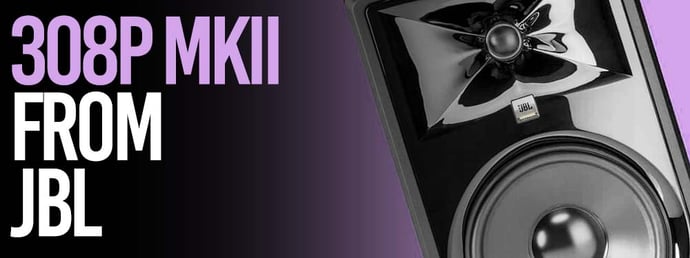
Now that we looked at one of the most expensive monitors on our list, it's time to look at the most affordable!
These JBL 308P studio monitors are one of the most affordable options on our list. You can get a pair of these for quite a decent chunk under $1,000.
This is great for those who want a well-rounded and reliable studio monitor experience but aren't willing to break the bank.
And by no means are these not serious studio monitors - they have some impressive specs.
This monitor is capable of delivering sound from 37Hz to 24kHz. A sub is preferable when using a setup with these to capture more low-end.
These updated MkII series features next-generation JBL transducers and new Boundary EQ, which helps restore neutral low-frequency response when speakers are placed on the work surface and adjacent to walls.
You also get updated HF and LF transducers: the new design improvements result in optimized damping for superior transient response and impressive deep bass with lower harmonic distortion, which is a noticeable improvement over the previous generation monitors.
One of the fan-favorite features of this monitor is the 'Broad sweet spot' technology, which gives you a neutral frequency response across a wide area and allows you to fine-tune your mix even while listening off-axis.
The only thing I'm not a fan of is the gloss-black plastic front fascia - it gives off some serious cheap vibes and will be susceptible to fingerprint marks.
Overall, when you combine the good price and the bedroom studio-friendly features like 'Broad Sweet Spot', these are a great choice for producers looking for something a tad more professional.
Check out the JBL LSR305 here.
#5. Mackie HR624 (Pair)
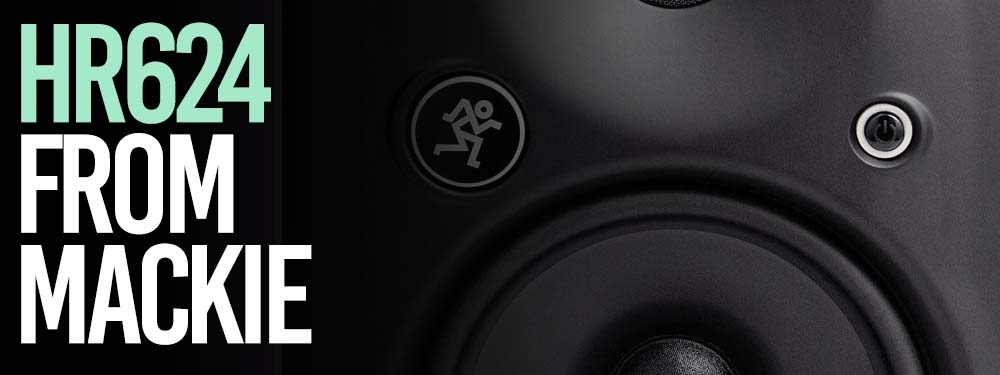
While not on the same level as ADAM or Neumann, Mackie delivers in terms of clarity and at a competitive price.
Mackie HR624 is a mid-range, middle-priced monitor that costs around $1000 for a pair.
This studio monitor provides the necessary features required for good mixing and sound production that won't break the bank.
It can be adjusted to any environment as it has adjustment buttons at the backside of it - acoustic adjustment with no noise from midrange artifacts, and passive radiators provide tight bass extension down to 45Hz.
Check out a video overview of these studio monitors:
The Mackie HR624 has a 6.7″ low-distortion LF transducer which delivers precise low frequency down to 45 kHz.
Its 1″ titanium dome tweeter provides very clear and accurate mid and high frequencies up to 22kHz.
A cool feature I enjoyed having around was that the front power button doubles as the indicator for overload and signals you when the monitor gets overloaded - mega cool!
Check out the Mackie HR624 here.
#4. Dynaudio BM5 mKIII 7″ (Single)
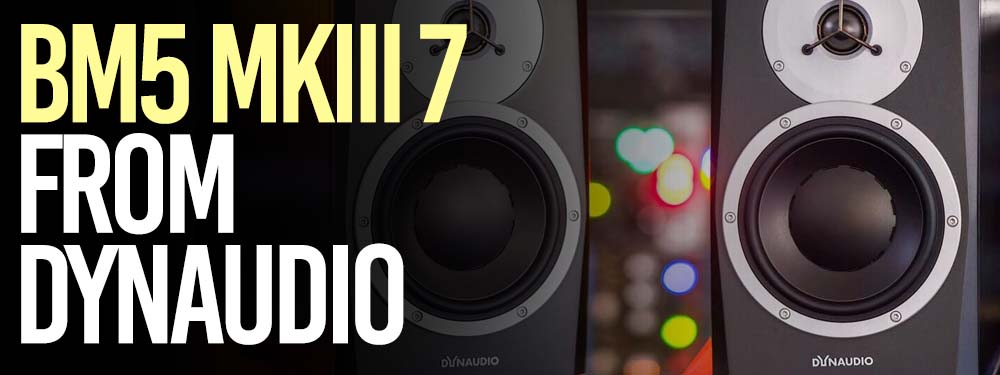
These are the second high-end studio monitors on our list - and they go neck-in-neck with the Neumann and ADAM studio monitor options.
These are used regularly by headliner EDM music producers, such as Dannic.
They're a staple in so many professional music studios, and there is a good reason why.
You've also got the benefit of these having a 7-inch driver as opposed to the smaller 5-inch driver you get in the Neumann's.
The clarity and balance of these studio monitors are why they are so popular.
Dynaudio achieves its neutral and uncolored sound with proprietary driver technology.
Check out this video review of these studio monitors:
Unlike standard copper wire, Dynaudio uses aluminum wire in its voice coils because it is lighter.
With more power from the increased amount of wire, Dynaudio gets to shape the sound coming out of their speakers for a quality listening experience that isn't colored or distorted by artificial elements like bass boosting or treble control.
These aren't as expensive as the Neumann's - in fact, you can actually grab a pair for under or right at $1,000 if you find a deal.
And if you're able to get these on a sale, pull the trigger! These are some of the best studio monitors in the business.
Check out the Dynaudio BM5 MKIII here.
#3. Presonus Eris E8 XT (Pair)
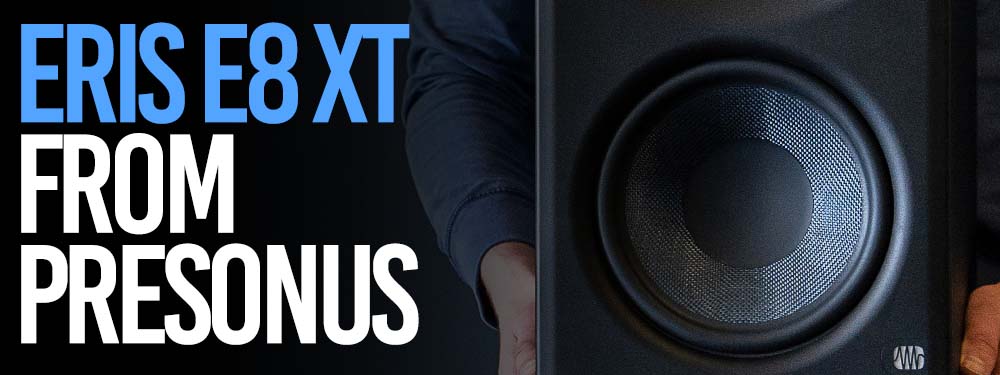
PreSonus is one of the top brands out there and it's well worth a second look, with many reviews speaking to its quality for the price.
The 8-inch woofer puts out great clarity and punch and is a great size relative to some other options on this list.
So you're able to snag a pair for under $1,000 and you get some big benefits.
Any downsides?
This low-priced compact studio monitor offers perfect sound around its frequency range and is a good option for small-sized rooms.
The only condition is that your room should be well acoustically treated before you purchase it.
Without being acoustically treated, you could face reflections that would interfere with the mixing or monitoring process.
It's a good idea to have at least minimal acoustic treatment done to your room if you're looking to buy this.
Some may find having to tune these speakers an annoyance, but once you dial these in to work with your studio, you'll be ready to rip any mixdown with ease!
As per usual with Presonus, you get more control over bass frequencies while mixing
.
It features a 1.25″ ultra-low-mass, silk-dome, high-frequency tweeter which is great for home and mid-range studio use.
The Presonus also has RF interference protection as well as noise isolation; plus Turn-On/Off transient protection so you can focus on your work without interruption!
Check out the Presonus Eris E8 XT here.
#2. Yamaha HS8 Powered Studio Monitor (Pair)
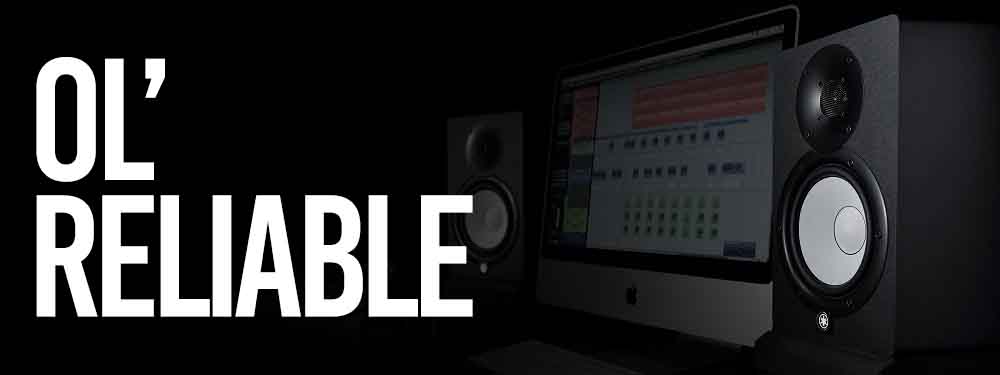
Ah, the HS8's. The ol' reliable home studio and professional recording studios alike.
I like to think of these as the best all-rounders. When it comes to a combination of quality, sound clarity, value, and frequency response, nobody comes quite close.
It has a high maximum volume to compensate for the lack of acoustic treatment and low walls thanks to its bigger-than-average 8-inch driver.
The HS8's 8” driver has a carbon fiber composite frame that delivers deep lows, smooth mids, and crisp highs.
For more acoustic compensation, the HS8's pivoting bass port lets you angle the speaker to compensate for room acoustics, and the included wall mount bracket lets you mount the HS8 on the wall to save space.
Check out this video review of these studio monitors:
Apart from the others, the Yamaha HS8 delivers a nearly flat frequency response.
This will take your mixing to new levels, especially if you've been using smaller studio monitors in the past. The HS8's provides 38Hz to 30kHz frequency response.
You'll get a bass that is tight and low.
2 kHz crossover provides crystal clear mid-range helpful for vocals of all sorts, including those in need of mix mastering or overdubbing.
There's not much to say - these are great all-rounders for those who want to go with the safe option.
You can't go wrong with the Yamaha HS8's.
Check out the Yamaha HS8 Powered Studio Monitor here.
#1. KRK Rokit 10-3 G4 (Pair)
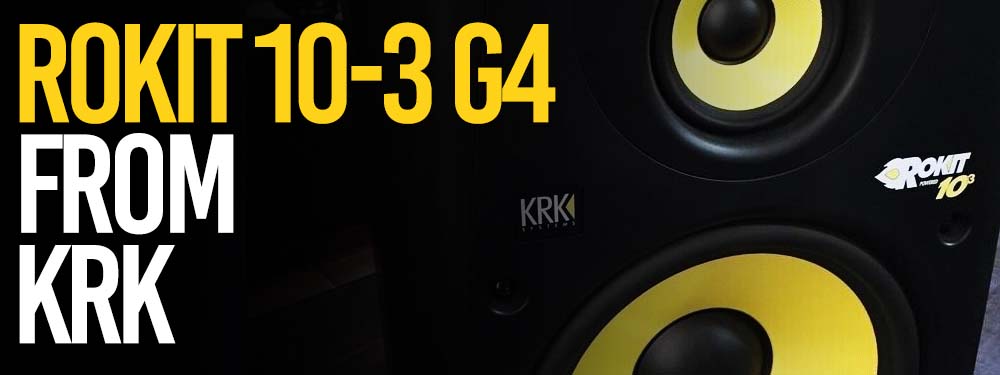
The KRK Rokit 10-3 G4 studio monitors feature the best price-to-driver size ratio of any speaker on this list.
These sit at the top of the KRK range, and the newly-updated G4 versions are not playing around.
I mean, you're getting a 10-inch transducer, 3 drivers, and an absolute symphony of the best KRK has to offer.
And with this being the biggest size of any monitor on this list, you're getting some of the best frequency coverage of anyone on this list: 25kHz up to 30kHz.
As aspected from this 3-way monitor system, it has a 140W class A/B amplifier that delivers SPL up to 113dB.
The power is distributed as 80W for low frequencies, 30W for mid frequencies, and 30W RMS for high frequencies.
The Front-firing Bass Port helps reduce boundary coupling while the front baffle design reduces any reflections when placed against a wall.
Here's a great video review of these monitors:
Its proprietary waveguide technology ensures clear sound imaging with superior quality output at all levels of listening volume.
And I just love how imposing they look - put these in your studio, and they will stand out.
Everyone will know you have the big daddy of the iconic KRK lineup.
The low-end response is great thanks to the redesigned bass reflex port and low-distortion Kevlar drivers.
The speakers feature EQ switches and an LCD visual EQ on the back of each monitor, a big upgrade from the G3 model and we love using them.
As for the weightiness of these speakers: they’re heavier than others on this list.— so carrying them around won't work if portability matters for you!
Overall, when you're looking for audio equipment that can rival recording studio quality, the KRK Rokit 10-3 G4's among the best studio monitors you can find.
Check out the KRK Rokit 10-3 G4 here.
Studio Monitor Positioning And Placement For Studio Monitors Under $1000
When you're using higher-end speakers in your setup, you must have the positioning and placement spot on to get the best sound possible.
It's easy to miss out on sonic clarity by not having an ideal studio setup, and you want to get the best sound possible out of your latest studio investment.
Positioning your speaker properly is a form of room correction to help your monitors sound crisp and clear.
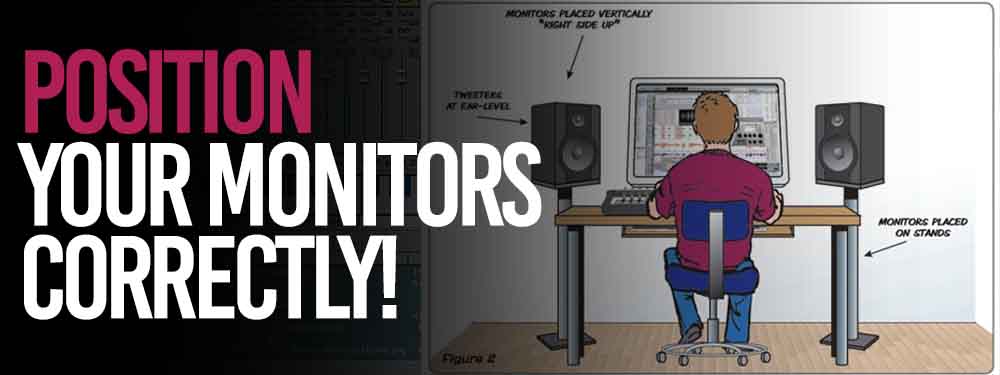
In all cases, you want to make sure that your ear is at least 2 feet away from the monitor.
Check out our ranking of the best studio monitors for a small room if you don't have a big studio space to work with.
Here's a video tutorial on proper studio monitor positioning:
How To Get A Flat Frequency Response With High-End Studio Monitors
It's important to get as flat a frequency response as possible and by making small changes to your room you can make studio monitors sound even better.
These studio monitors will have some great frequency response, but the quality can be ruined if your room doesn't have proper treatment
To get a flat frequency response in your room, try using these:
- Acoustic panels
- Bass traps
- Sound diffusers
These all help minimize echo and unwanted resonant frequencies.
Acoustic panels are better at filtering out mid to high frequencies, while bass traps are more suited for low-frequency ranges.
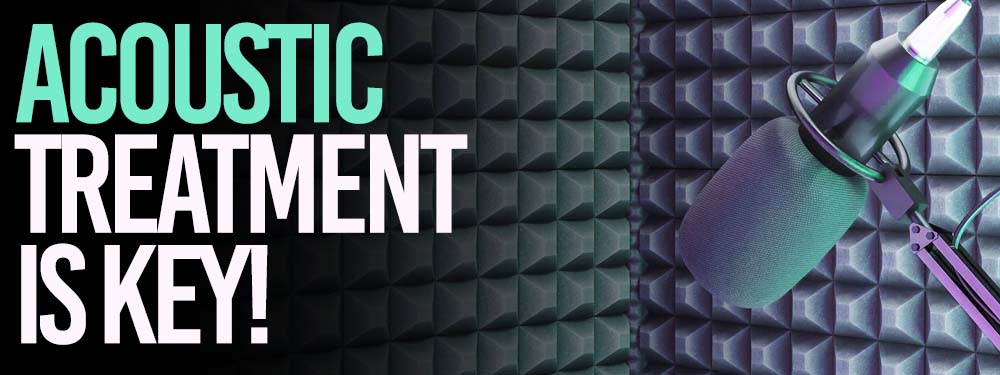
The purpose of sound diffusers is to soften the sound in a room and reduce reverb time.
Despite the variety of designs, all sound diffusers have one thing in common: they all have porous surfaces that scatter sound waves as they enter the material.
As a rule of thumb, the larger the surface area, the more effective the diffuser.
Depending on the shape of your room and desired treatment, you can choose from a variety of acoustic products such as fabric- or wood-based panels that come in an assortment of colors depending on your decor preferences.
Picking The Right Budget For Studio Monitors
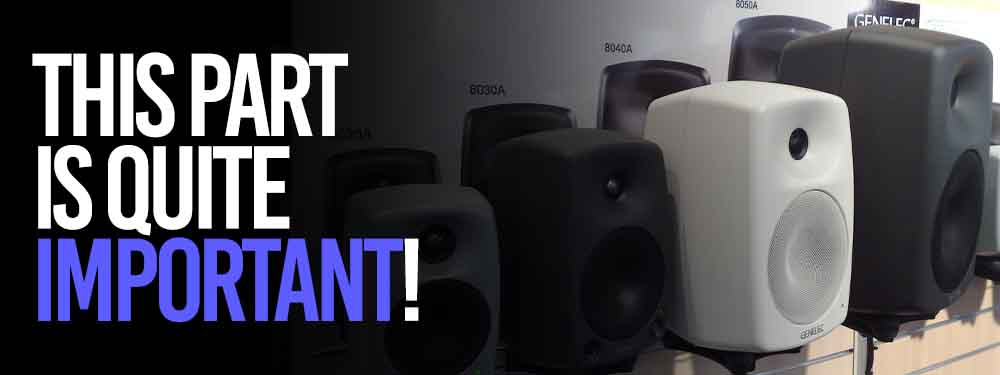
When it comes to picking the right studio monitors under $1000, it's important to think about some important factors.
Driver size (or woofer size) is important.
The bigger this is, the better your speakers will usually sound, and the more of the frequency spectrum they will cover.
The driver is the part of the speaker that produces sound, and each model will have varying sizes.
If you are purchasing new monitors, make sure to check their driver size.
Most drivers range from 5 to 10 inches.
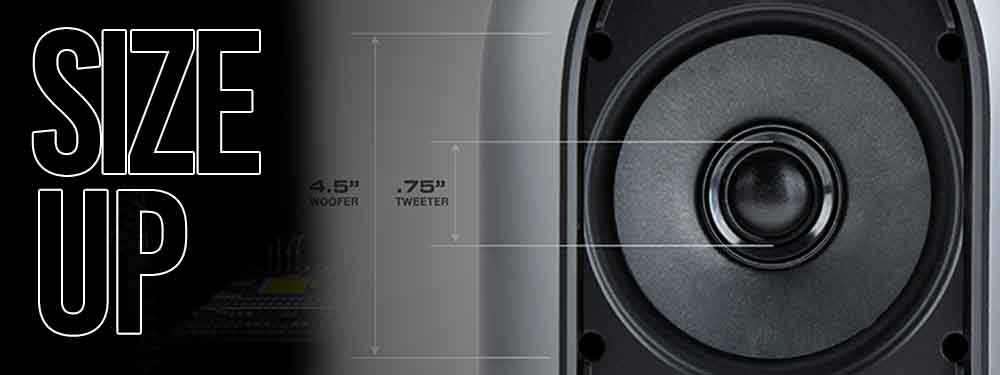
At this price point, studio monitors will usually come at around 5 to 10-inch drivers tops.
The smaller the drivers, the weaker the low frequencies in most cases, in which case you'll probably need a supplementary sub to help support the smaller studio monitors.
When looking for studio monitors, it is important to find the "sweet spot" where you can hear as many sound frequencies as possible within your budget.
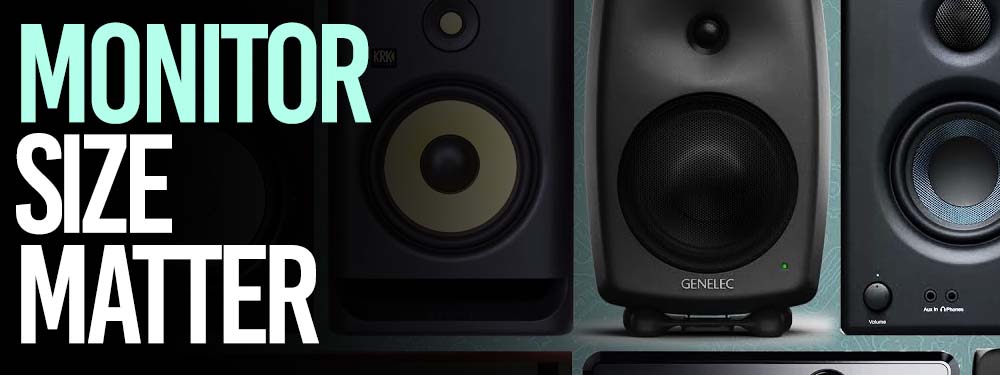
The wider the frequency response, the better.
This is why technical specifications are necessary when determining a monitor's quality and whether or not it has a wide range of sound.
Once you find that perfect pairing of specs and product reviews then make an educated decision!
Picking Budget Studio Monitors With Good Frequency Range
When choosing a pair of budget studio monitors, one of the most important criteria to compare is the frequency range.
The majority of monitors will fall between 80 Hz and 20 kHz, which is the audible range for the human ear.
However, some monitors can go as low as 40 Hz, and others can go as high as 30 kHz.
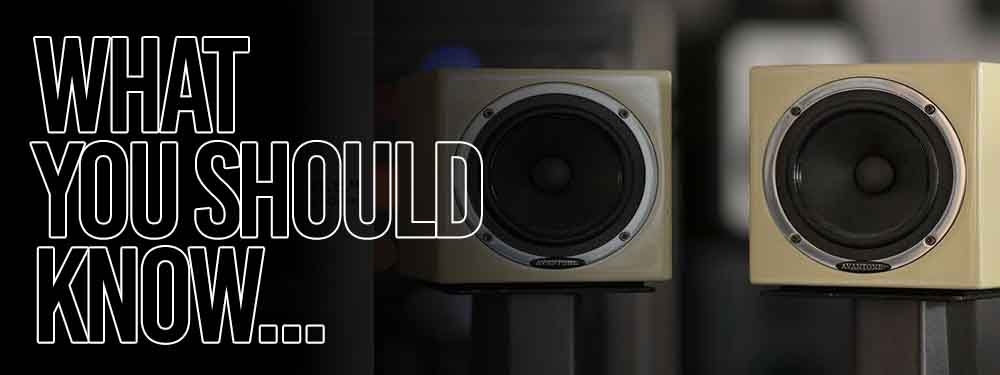
The lower the frequency range, the deeper the bass.
Usually, more expensive monitors will have more of a frequency range that includes deeper bass frequencies.
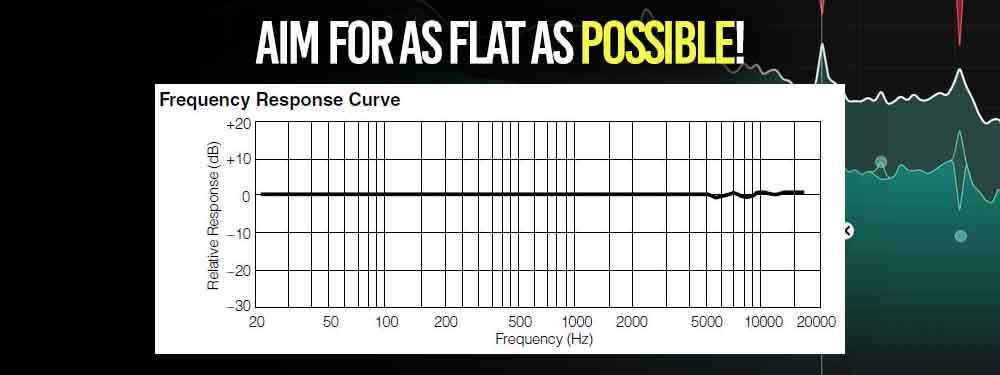
The higher the frequency range, the higher the treble. Depending on what you are recording, one may be more important than the other.
For accurately recording acoustic instruments, such as piano or guitar, it is important to make sure the monitors you are using have a high-frequency range so they can reproduce those sounds.
It's also important for studio monitors to have a low latency delay between when you hear something and how long it takes for that sound to be reproduced.
Most are around 10- 20 milliseconds but these numbers vary depending on what you're listening to.
Experts always say never to mix or master with Bluetooth speakers because their response time hovers at 100 milliseconds which would throw everything off.
Look out for monitors that have a high distortion rate, as these will produce unnatural-sounding audio.
Lastly, you’ll want to find monitors with a wide dynamic range: the difference between the loudest and softest sound they can produce.
Difference Between Studio Monitors Vs. Speakers
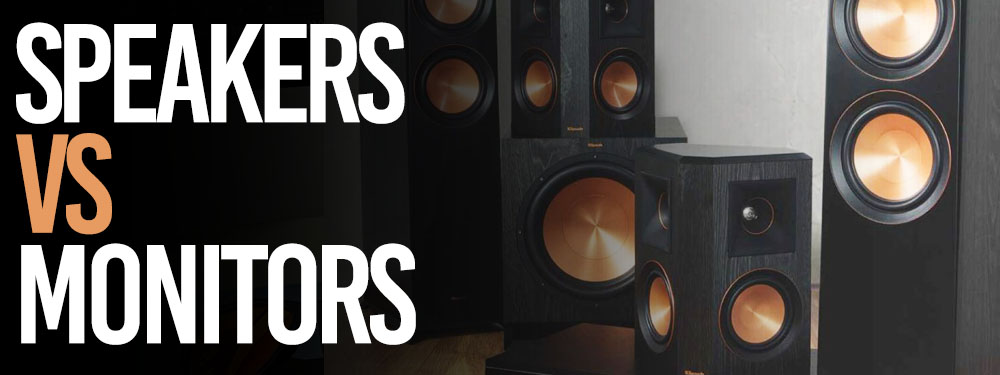
There are some significant differences between these two types, and knowledge will help you pick the best studio monitors for a small room.
Studio monitors are specially designed for audio production and recording.
They have increased power handling, accurate response, and high-fidelity sound quality. This allows you to hear every detail of your work during the creative process.
On the other end of the spectrum, computer speakers are designed for casual listening to music and watching videos.
These two types of speakers have some major differences.
Studio monitors are meant for production because they have a flat response curve and a high level of detail.
Most of these monitors don't come with an amplifier, so you will need either a powered audio interface or a dedicated audio card with line-level input to record sound through those speakers.
Also, because studio monitors were designed for production work and not playback, their 1/4-inch input is larger than most computer speakers.
You can also connect dedicated speakers to your computer with a cable.
Once you’ve connected the speakers, you can adjust the volume with the computer’s software.
Because studio monitors have a flat response curve, you can hear every detail in your audio.
The best choice for you will depend on your specific needs.
Hopefully, this list and comparison have provided you with the information you need to make the right decision!
Get your music on playlists now.
It’s time you get your exposure and listeners up - playlisting by Boost Collective has been trusted by 50,000+ artists worldwide.
It’s easy: Search your song, get on playlists, and track your campaign.
What’re you waiting for? Tap in - and get added to playlists in 24 hours.
Join Boost Collective for free here.


